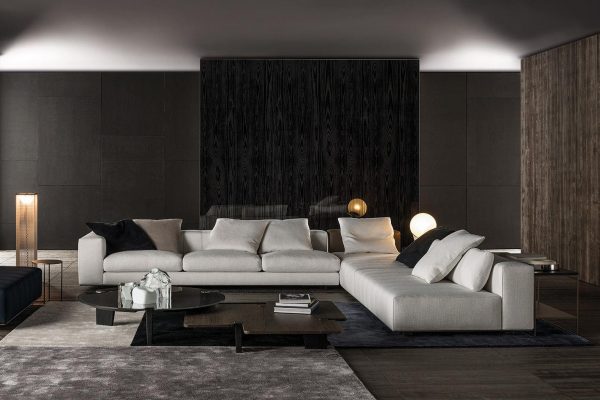The discovery of the Pierre Jeanneret Chandigarh Indian collection has enabled the world to encounter the creative talent of one of the lesser-known yet most incisive designers of the 20th century.
Life and art of an unknown genius: let’s find out more!
The Esprit Nouveau table for Maison La Roche, the very elegant Casiers Standard in ash, and the epiphanic LC4 chaise longue. In the collective imagination, the linearity of these iconic style signs appears inextricably linked to the genius of Charles-Edouard Jeanneret-Gris, better known as Monsieur Le Corbusier.
Yet the master from La Chaux-de-Fonds was certainly not left alone in the design of his masterpieces, quite the contrary. As appropriately noted in the Cassina catalog, in fact, two other signatures assisted the Swiss architect and designer in his tubular experiments-Pierre Jeanneret and Charlotte Perriand.
If Perriand’s name already tickles our memory for the oriental divertissement of the Indochine seat and the avant-garde modularity of the Nuage bookcase, however, the profile of the Pierre Jeanneret designer is decidedly more obscure.
A cousin of Le Corbusier himself and a long-forgotten artist, Jeanneret, in fact, represents today-almost sixty years after his 1967 death in Geneva-an interesting case of authorial rediscovery.
Coming a little closer to the parable of the highly acclaimed Vivian Maier, the photographer-child whose shots were accidentally discovered in an Illinois attic in 2007, news about the work of this misunderstood Geneva architect remained confined to his 40-year collaboration with his more famous relative until a handful of years ago, when some local merchants visited Chandigarh.
Here, among the arcades of the wide rationalist avenues and the impeccable harmony of the institutional rooms erected as a treasure chest of time, the scattered group of traders discovered what it is no exaggeration to call a treasure.
Located in the foothills of the sub-Himalayan range of the Shivalik Mountains, the “Chandi House”-named after the savior deity celebrated in the Panchkula district-became famous from its founding in 1953 because of the uniqueness of an urban design signed by Le Corbusier himself.
To tell the truth, however, the leading exponent of modernism made but a few sporadic visits to the capital of Punjab and Haryana, instead offering ample freedom of action and planning precisely to his trusted cousin Jeanneret, who moved there for more than a decade.
Staying in what was soon to become one of the richest metropolises in Northern India, Pierre contaminated his architectural training, giving rise to a highly original expressive melting pot, underscored by thejuxtaposition of local materials and techniques-above all, the massive use of the indigenous art of rattan-and the typical geometry of European lines.
Pierre Jeanneret Chandigarh, Chandigarh Pierre Jeanneret. A bond so intimate that it sublimated into a stylistic correspondence of amorous senses perfectly mirrored by some of the most luminous evidence of an utterly fertile creative genius.
Indeed, what is most impressive about the discovery made by the successful group of traders in the late 1990s is the prolific nature of a production capable of ranging from seating designed for institutional settings to furniture for the sleeping area.
Over the entire collection, thus towers the imposing Kangaroo chair, a colonial piece of furniture that takes on the features of a tribute to the pachydermic Indian elephant, enhancing through its solid rosewood frame the ivory-colored reminiscences of woven wicker.
Making extensive use of bifrontalism-especially in furniture intended for public-civic use, moreover, Jeanneret’s Indian-period works play on shapes and perspectives, thus generating furniture-sculptures with neither front nor back.
As in the case of the Double Library Bookcase, made of teak-a primigenial material of local craftsmanship and particularly well suited to support lower production costs-or the Pierre Jeanneret designer’s Dismantling Desk; speculating on the intersection of straight lines, sinuous shapes and rounded corners, the latter creation-conceived for the Chandigarh Museum and Cultural Center-openly reveals the Geneva designer’s split between modernist training and Eastern infatuation.
Interiors played on the composition of X, U and V shapes, Pierre Jeanneret Chardigarh furniture does not currently appear to be in production for any brand. The only buying opportunities, therefore, are limited to dealers of vintage pieces.
Here is a quick Top 5 of the most valuable items in the entire Pierre Jeanneret Chandigarh catalog:
5. Senat armchair in Tek.
Designed to be housed in the Government House in Chandigarh, the solid teak frame of this extraordinary seat is embellished with yellow pony leather.
4. Teak Dormeuse.
Produced in India between 1952 and 1956, Jeanneret’s eccentric hybrid sofa reuses the materials previously used to make the Senat Armchair but opts for a forest green upholstery.
3. Public Bench.
Among the seats concerning V-shaped legs, this splendid example of functional furniture stands out for the comfort of its upholstered supports and the elegant combination of bistro lumber and a tanning of the leather tending toward midnight blue.
2 e 1. Library Desk with Light and Newspaper Shelf.
Sharing, finally, the top step of the podium are two items that – it has to be said – are worth as much now as they weigh!
The undoubted charm of the elegant Indian wood desk, however, is, in our opinion, outweighed by the assumed historical centrality of the second article. Designed for the city’s Public Bookstore, the Pierre Jeanneret Chandigarh Newspaper Shelf-made of solid teak and veneer and equipped with 20 adjustable aluminum shelves used for displaying magazines-is, in fact, an outstanding testimony to the democratization process in India’s then fledgling federal state.
Written by Marco Colombo for Sag80 Group



